First some general remarks about clouds and water droplets:
-
Visible white clouds are made of very small water droplets (less than 1 micron)
that equally scatter light at all wavelengths. For such small droplets the fall time is on order of months, so that individual cloud long dissipates before that. These particles are so small that mg is negligible so they literally float in the atmosphere.
They are suspended in the fluid
- The cloud base is determined by the stability condition; it represents the height at which the air parcel can no longer rise (usually because water vapor has condensed to liquid
- The cloud is the visual manifestation of condensed water vapor within a much larger water vapor network. This is why the water vapor satellite image is useful - there are not necessarily always clouds where there is water vapor
- In general a cloud with large droplets absorbs incoming optical light and hence appears darker from the ground (we are looking up through clouds).
As we will now see, a rain event is necessarily a race condition between evaporatation and precipitation. Here evaporation is represented by the outward arrows; the inward arrows represent accretion of growth of the droplet.
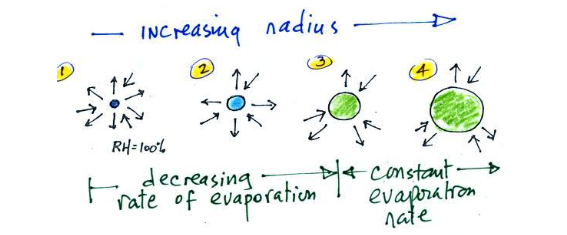
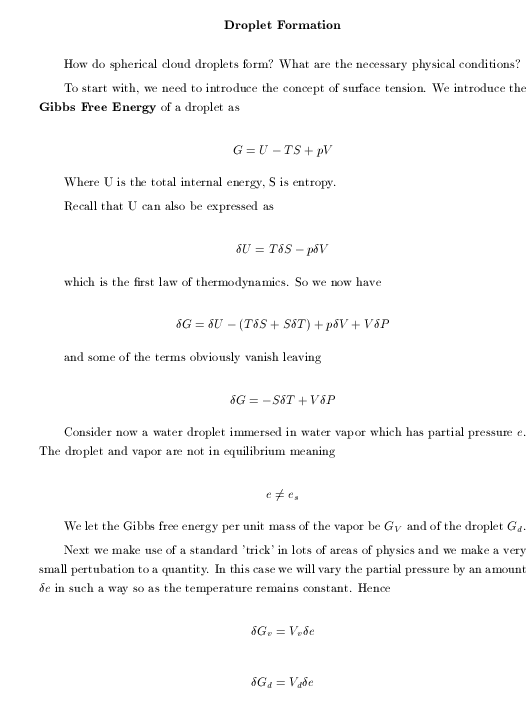
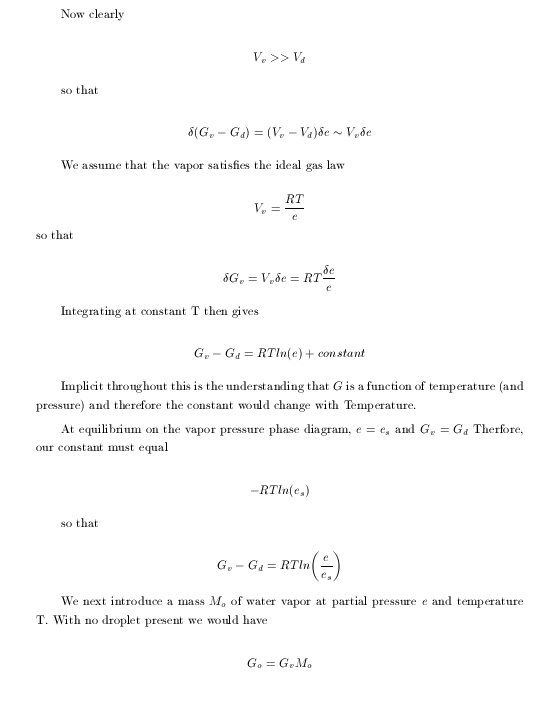
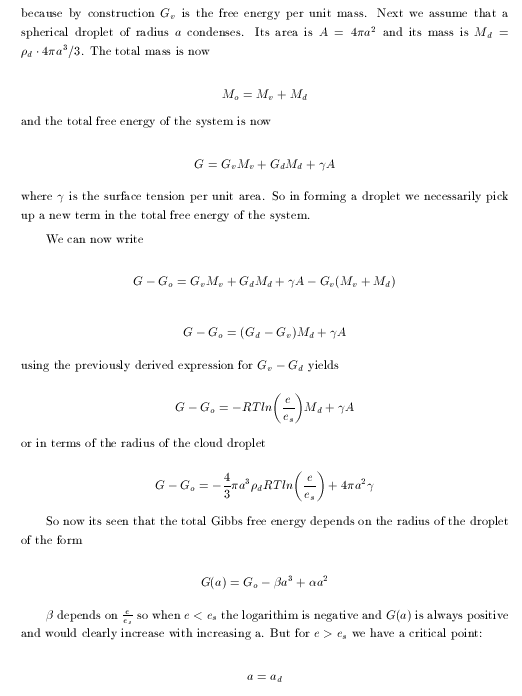
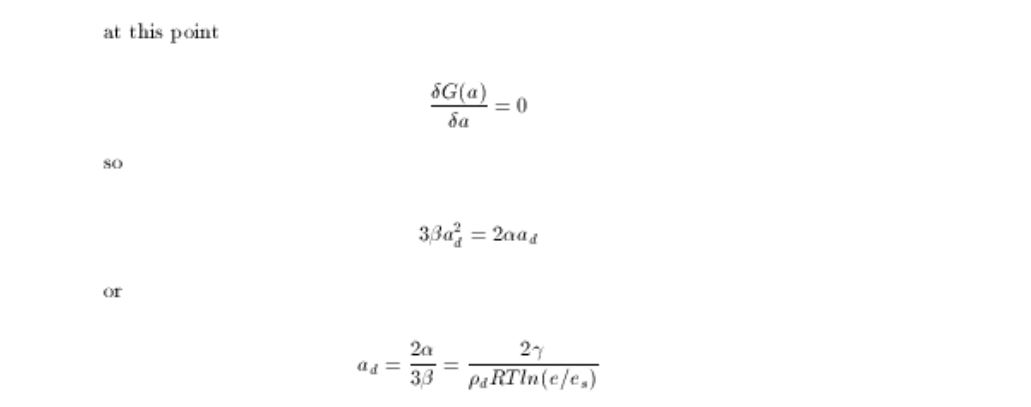
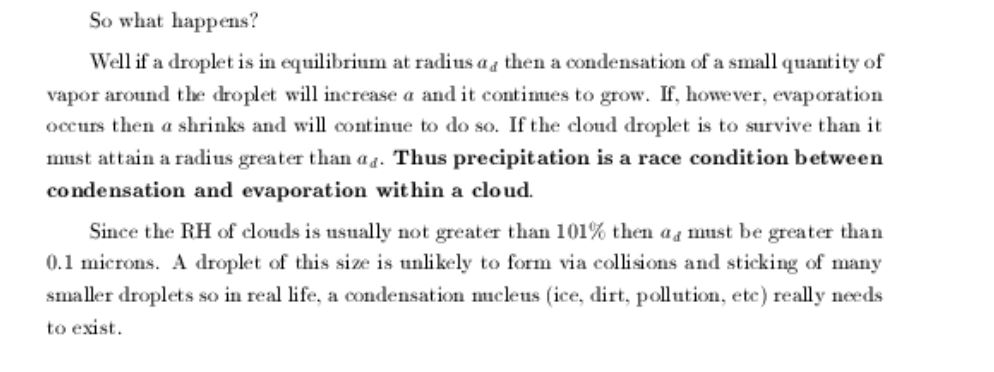
Falling raindrops are generally not tear drop shaped. Once the size gets larget than about 1.5 mm in radius, the shape becomes flattened on the side of the drop falling towards the ground. In the size becomes too large, then that "pancake" fragments into smaller spherical drops.
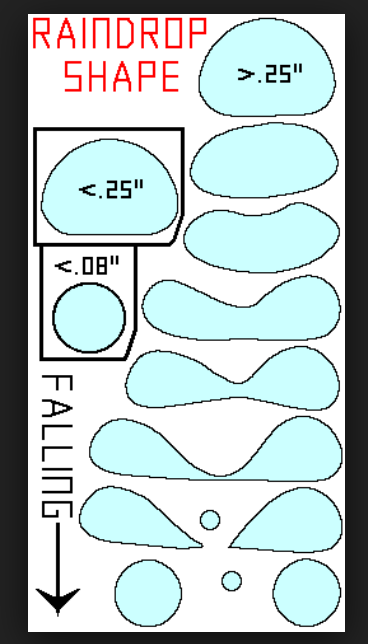
A very slightly different method was used by Kelvin in the 1880s to derive the same expressions. Surface tension below is given
by σ and the nkT approach is used instead of RT where n is the number or number density of particles in the system.
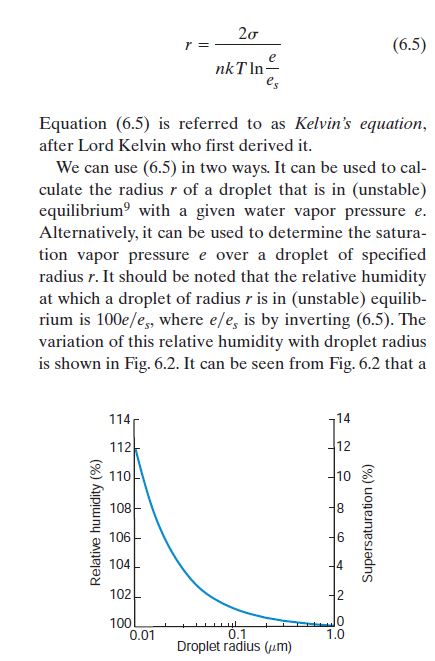 | 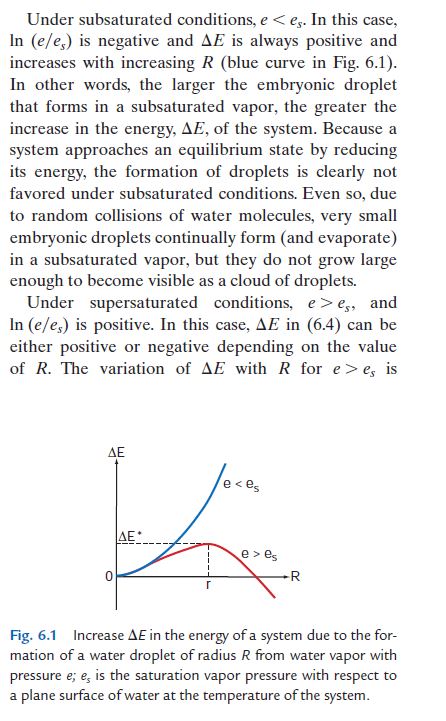 |
The above graph shows important conditions of droplet growth. For instance, for a droplet radius of .01 μm to grow it would
require a relative humidity of 112% (super saturation of 12%) and
this just doesn't happen in the real world. A droplet of radius
1 μm requires only .12% of super saturation which does happen.
|



